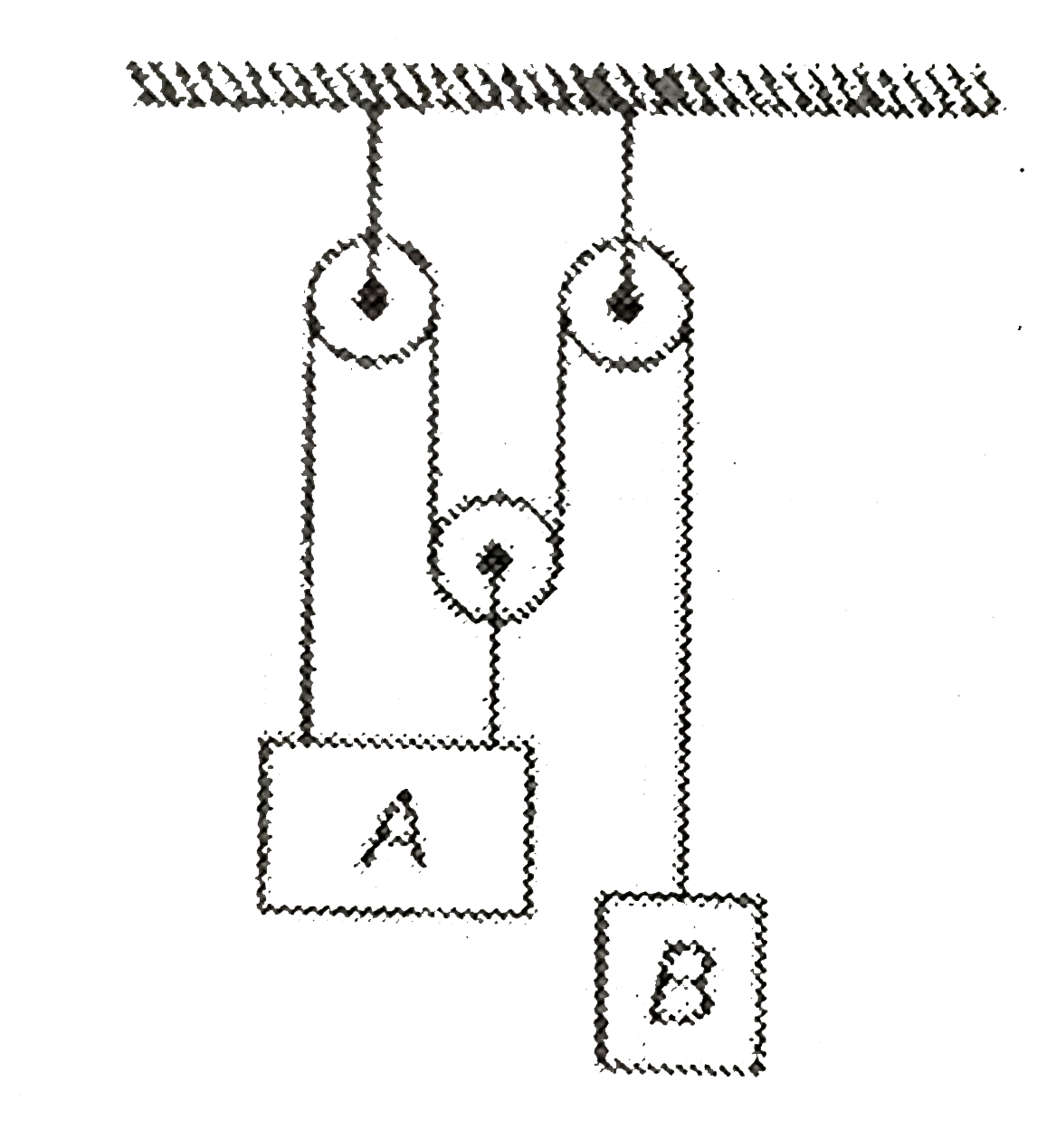At certain of time velocities of 1 and 2 both are 1m/s upwards. Find the velocity of 3 at that moment

In above solution ,we have found that
a2+a3+2a1=0
Similarly, we can find
V2+V3+2V1=0
Taking upward direction as positive we are given
V1=V2=1m/s
∴V3=−3m/s
i.e. velocity of block 3is3m/s (downwards)
Topper's Solved these Questions
- LAWS OF MOTIONBook:DC PANDEY ENGLISHChapter:LAWS OF MOTIONExercise:Exercise 8.4
Explore 3 Videos
- LAWS OF MOTIONBook:DC PANDEY ENGLISHChapter:LAWS OF MOTIONExercise:Exercise 8.5
Explore 2 Videos
- LAWS OF MOTIONBook:DC PANDEY ENGLISHChapter:LAWS OF MOTIONExercise:Exercise 8.2
Explore 9 Videos
- KINEMATICS 1Book:DC PANDEY ENGLISHChapter:KINEMATICS 1Exercise:INTEGER_TYPE
Explore 15 Videos
- LAWS OF THERMODYNAMICSBook:DC PANDEY ENGLISHChapter:LAWS OF THERMODYNAMICSExercise:Level 2 Subjective
Explore 18 Videos
Similar Questions
At a certain time velocities of 1 and 2 both are 1m/s upwards. Find the velocity of 3 at that moment

View SolutionAt a certain time velocities of 1 and 2 both are 1m/s upwards. Find the velocity of 3 at that moment

View SolutionAt a given instant. A is moving with velocity of 5m/s upward. What is velocity of B at that time:

View SolutionTwo particles are projected from a tower horizontally in opposite directions with velocities 10m/sand20m/s. Find the time when their velocity vectors are mutually perpendicular. Take g=10m/s2.
View SolutionThe acceleration of paticle varies with time as :
a(t)=3t2+4
If the initial velocity of particle is 2m/s, find the velocity of particle at t=3sec.
View SolutionA body covers first 13 part of its journey with a velocity of 2m/s, next 13 part with a velocity of 3ms and rest of the journey with a velocity 6m/s. The average velocity of the body will be
View SolutionThe rod of length l=1m rotates with an angular velocity ω=2rads−1 an the point P moves with velocity v=1ms−1 and acceleration a=1ms−2. Find the velocity and acceleration of Q.

View SolutionThe velocity time relation of a particle is given by v =(3t2−2t−1)m/s Calculate the position and acceleration of the particle when velocity of the particle is zero . Given the initial position of the particle is 5m .
View SolutionFind the maximum and minimum distances of the planet A from the sun S, if at a certain moment of times it was at a distance r0 and travelling with the velocity υ0. With the angle between the radius vector and velocity vector being equal to ϕ.

View SolutionA body of mass m1 moving with a velocity 3m/s collides with another body at rest of m2 . After collision the velocities of the two bodies are 2m/s and 5m/s , respectively , along the direction of motion of m1. The ratio m1/m2 is
View Solution

